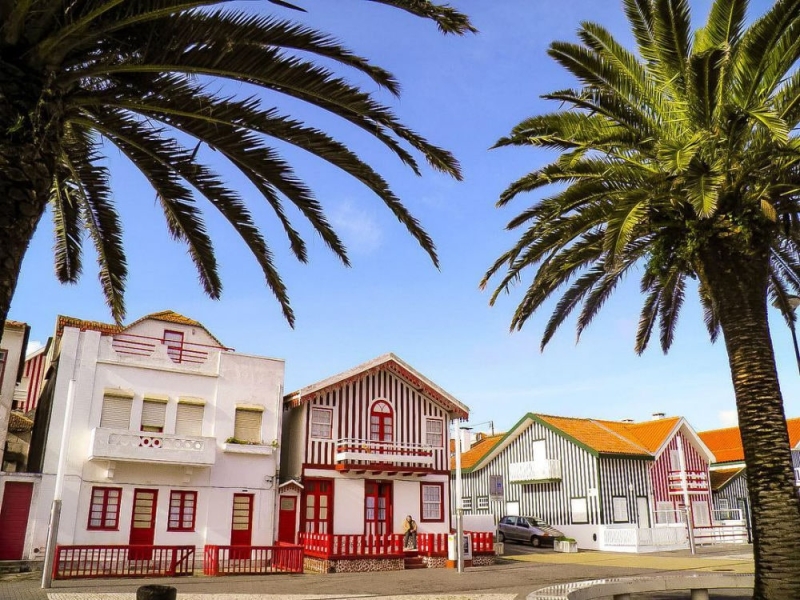
Over the past few years, Porto, the second largest city in Portugal, has been among the top ten most popular cities in Europe. There are several reasons for this: such a warm climate that the temperature from February to November rarely drops below +15, the historical center included in the UNESCO World Heritage List, the ocean coast and excellent beaches that can be reached by metro, low prices and excellent wine. Porto is a small city that can be explored on foot in a few days, so we will tell you about interesting places in the city and its surroundings: palaces, monasteries, wine plantations and medieval towns that are worth seeing if you decide to spend more than a couple of days in Porto.
Ponte Luís I
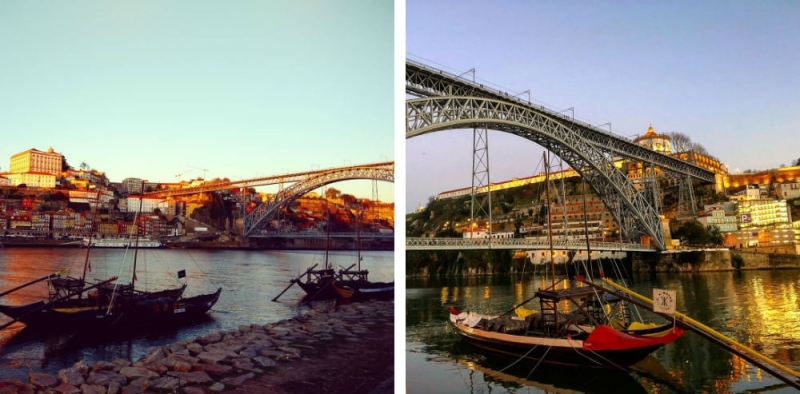
Photo: @priscilacampo/janwillem7/Instagram.com
The old city of Porto lies on the hills of the right bank of the Douro River. It is connected to the center of port wine production, the city of Vila Nova di Gaia, which lies on the other side of the river, by several beautiful bridges. The most famous of these is the elegant metal King Luis Bridge, built by Eiffel’s student Théophile Seriga. The top level of the bridge offers the best views of Porto, the river and the rabelas (antique boats),
moored at the piers. And the bridge itself has long become one of the symbols of the city and its image can be found everywhere – from souvenirs to port wine labels.
Ribeira, the most beautiful quarter of the Old Town
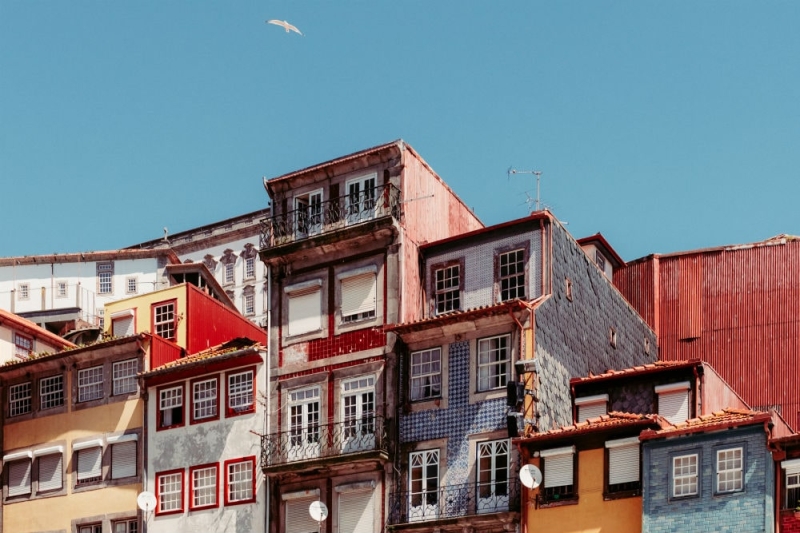
Photo: @samuelzeller
With colorful houses, narrow cobbled streets, artisan shops, endless staircases and port wine bars, Ribeira is Porto’s most colorful quarter. The facades of many houses are lined with azulejo tiles, shining in the sun. The houses on the hill are so narrow and small and overhang each other so much that they resemble bird’s nests. The Ribeira embankment is the widest and most beautiful in the city, where pleasure boats and ancient ships depart from here. In addition to cheap cafes and restaurants, Ribeira has many excellent shops selling ceramics and leather goods.
São Bento Train Station (Estação de São Bento)
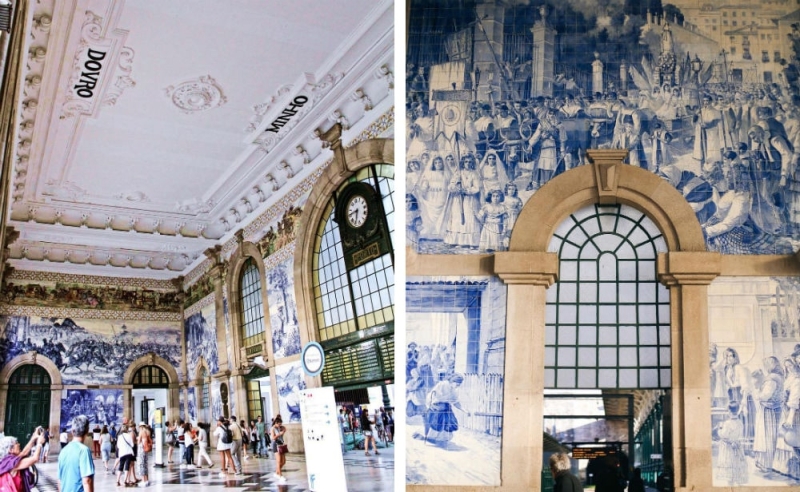
Photo: @pixelgraphy.pt/@mafaldarodrigues.fotografia/Instagram.com
Sao Bento was opened in 1916. The walls of the main hall of the station are lined with 20 thousand azulejos (traditional Portuguese blue and white painted tiles),
depicting the main historical events of Portugal and the landscapes of Porto. All azulejos were hand-painted by artist Georges Coles, who took more than three years to complete.
Livraria Lello
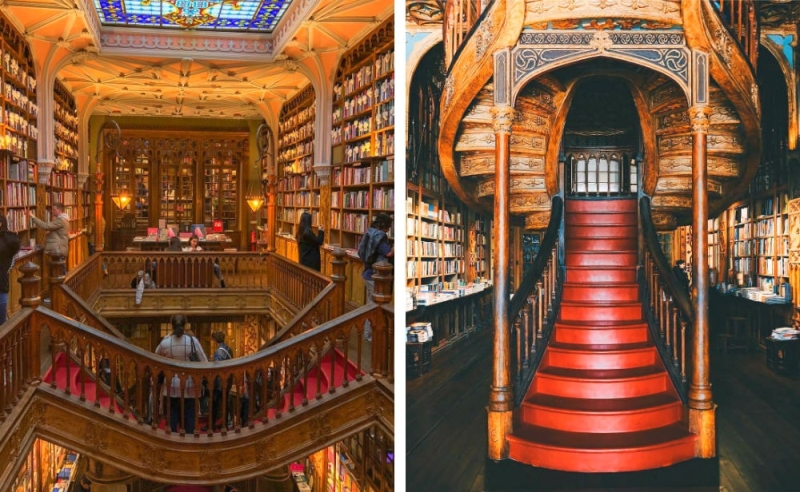
Photo: @molochko89/@bmseventh/Instagram.com
Lello is the oldest bookstore in Portugal, which for many years has been included in the top 5 most beautiful bookstores in the world. The facade and interior are made in the neo-Gothic style, with an abundance of small details, intricate carvings and lush decoration. The store’s curved red staircase, carved walls, shelving and stained glass ceiling inspired JK Rowling and became the inspiration for the Hogwarts Library in Harry Potter. In addition to the striking interior, the store pleasantly surprises with its selection of books in English, Portuguese and French.
Entrance to the store costs 4 euros. But if you buy a book, the cost of admission will be deducted from its price.
Observation platforms
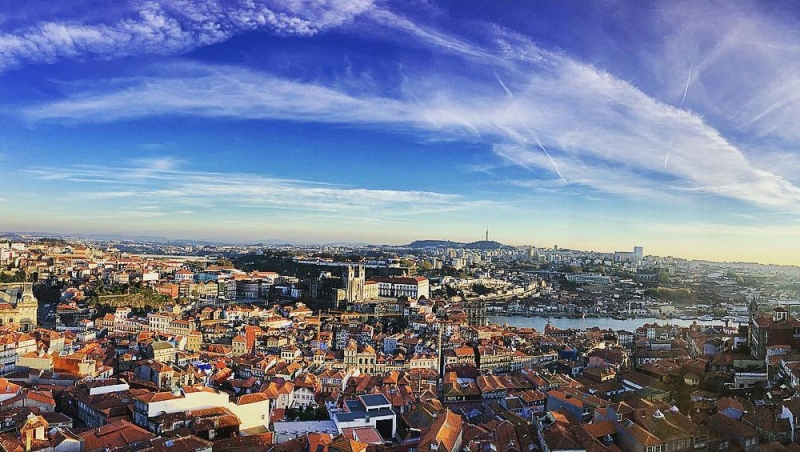
Photo: @alicia_bonilla/Instagram.com
Porto is a city on the hills, and there are many observation platforms, from where you can enjoy an excellent view of the city during the day (precisely during the day, because the colorful Old Town is dimly lit at night):
- The area near the Se Catedral. The cathedral stands on top of the highest hill in the city. In addition to the main panoramic platform, there is also a small one near the Chafariz do Pelicano fountain.
- The platform on top of the 18th century Clérigos tower (Torre de los Clérigos) in the heart of the Old Town. This 75-meter tower was considered the tallest in Portugal for more than a hundred years. Entrance is paid and costs 4 euros.
- The area near the monastery of Serra do Pilar, from where the entire Old Town, the river and the King Luis Bridge are visible at the same time.
Ocean coast, beaches, lighthouses and the best fish restaurants
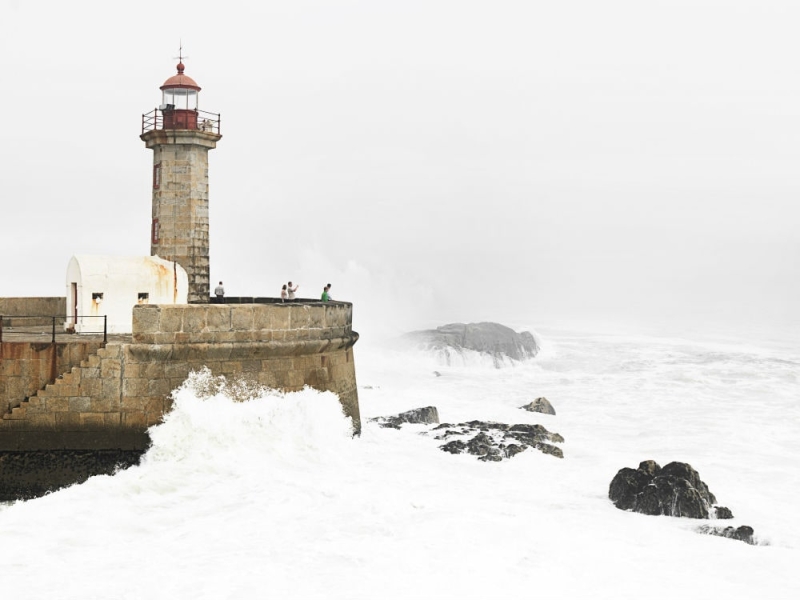
Photo: @monicasilva/Instagram.com
Porto lies on the banks of the Douro River, a few kilometers from where it flows into the ocean. The ocean beaches and lighthouses in the Matosinhos area can be reached in 30-50 minutes by bus or metro from anywhere in the city. There are many beaches there: wild and equipped, sandy and small-pebble.
The largest and most popular beach is the sandy Matosinhos Beach. Next to it lies R. Heróis de França street, which is home to dozens of the city’s best fish restaurants. We also recommend visiting the ancient lighthouse Farol de Felgueira, at the foot of which huge waves crash in any weather.
Historic tram running from the city center to the coast
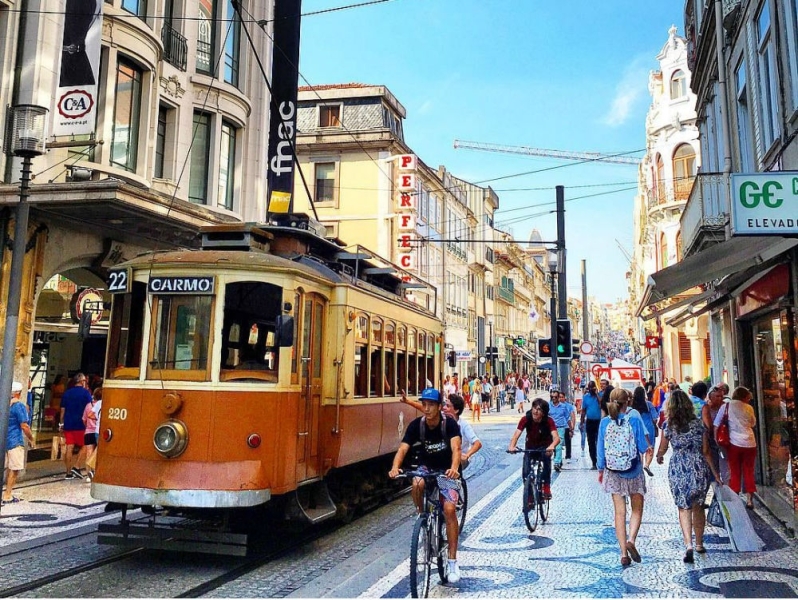
Photo: @thehostelgirlhk/Instagram.com
Porto has far fewer vintage trams than Lisbon, but some are still in use. Vintage yellow trams from 1872, decorated inside with wooden panels, leather seats and brass fittings, run on three lines: 1, 18 and 22. The most popular of them is 1, which runs from Infante station along the Doro coast to the ocean coast. Lines 18 and 22 are much shorter and run through the most beautiful streets of the city center. Regular passes on these three lines do not work; the ticket must be purchased from the driver in cash, it costs 3 euros one way.
Palace of the Exchange (Palácio da Bolsa)
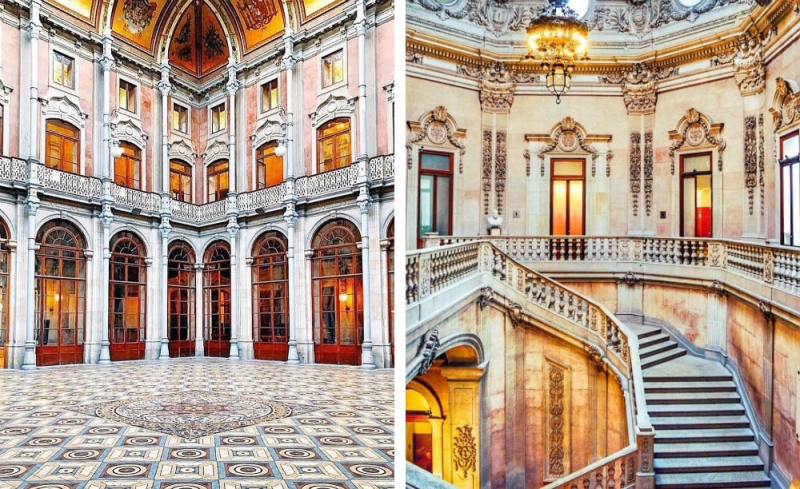
Photo: @ananewyork/@sarasignorini_/Instagram.com
The Palace of the Exchange is a neoclassical masterpiece built in 1891. Dozens of artists worked on its interior. Each room is designed in an original style and they are all designed to show the wealth and power of Porto, a city of wealthy merchants and winemakers. The Arab Hall dazzles with gold and arabesques, in the courtyard the walls are decorated with the coats of arms of the cities with which Porto traded, and the Golden Hall and the Assembly Hall are decorated with frescoes, sculptures and gold leaf. Ticket price: 8 euros full, 4.5 euros reduced for students and pensioners.
Church of São Francisco (Igreja Monumento de São Francisco)
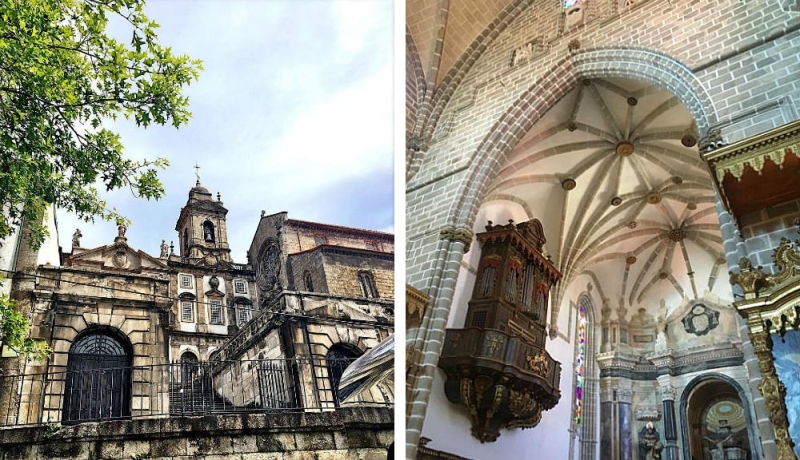
Photo: @magnum6666/@monicabuddenhagen/Instagram.com
The Church of São Francisco, in Gothic style with Baroque elements, is beautiful both outside and inside. The interior is decorated with wooden panels, the walls and dome are covered with frescoes, and the huge altars are decorated with gilded carvings. According to legend, 370 kilograms of gold leaf were used to gild the altars of San Francisco. Also near the church there are catacombs where townspeople were buried in the 18th and 19th centuries and which are now open to the public, as well as a museum of ancient paintings and furniture. Ticket price (church+catacombs+museum) 4 euros.
Museum of Contemporary Art Serralves (Fundação de Serralves)
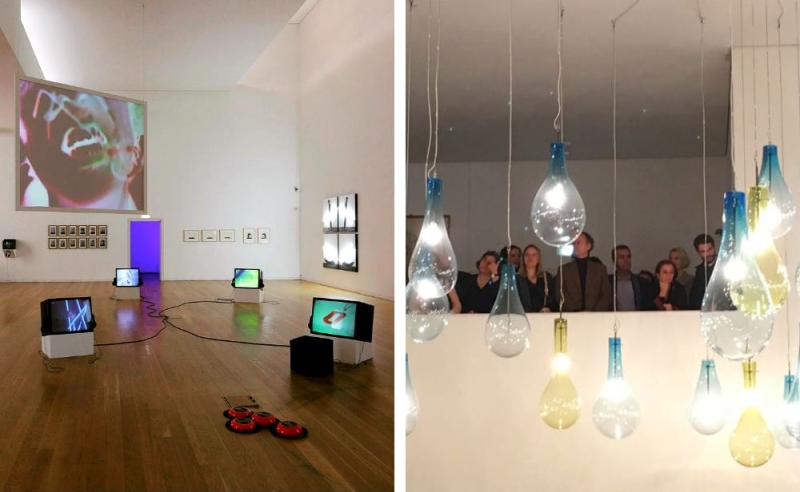
Photo: @nunocenteno/@pijama_orchestra/Instagram.com
Serralves is one of the largest and most visited museums in Portugal, built in 1999. The 5,000 m² area houses an impressive collection of Portuguese and European contemporary art and several temporary exhibitions. The museum building, designed by the architect Alvar Vieira, is an interesting example of modern architecture. The museum is surrounded by a large garden, which is decorated with sculptures by the minimalists Graham and Serra. The garden often hosts exhibitions of artists, sculptors and designers.
Admission price: 10 euros full, 5 euros reduced for students and pensioners.
Best places around Porto:
Aveira
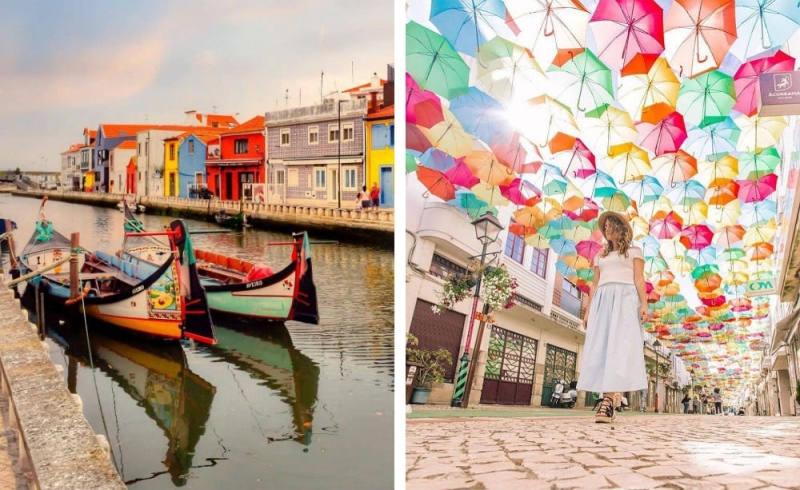
Photo: @luisdelfim/@gracejsilla/Instagram.com
74 kilometers south of Porto is Aveiro, which is called the “Portuguese Venice” because of the dozens of canals along which painted “moliceiro” boats float. The fishermen’s houses overlooking the canals are painted in all the colors of the rainbow, palm trees grow on the embankments, and in the center of the city there is the Convento de Jesus,
Capela do Senhor das Barrocas and Church of Mercy (Igreja da Misericórdia),
whose interiors are decorated with elaborate wood carvings.
Costa Nova do Prado
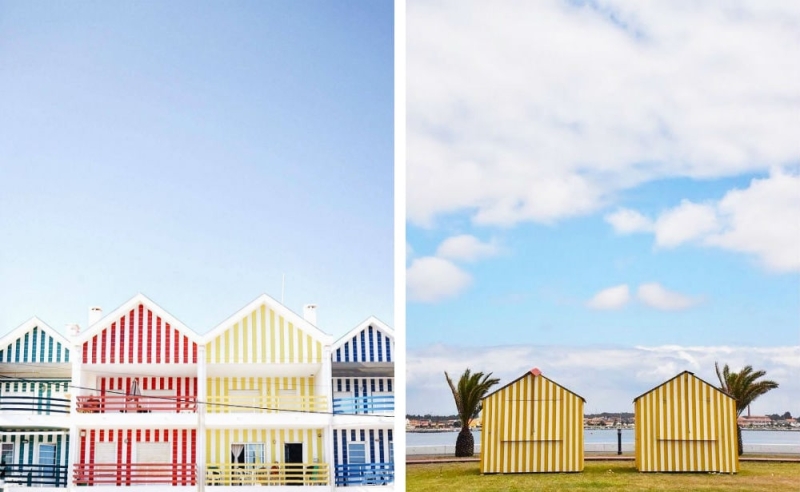
Photo: @leparisblog/@paulamagal/Instagram.com
Costa Nova is a seaside resort 84 kilometers from Porto and 11 kilometers from Aveiro, which is famous for its excellent beaches, sand dune, surf beaches and amazing fishermen’s houses. All houses are painted in horizontal and vertical stripes, and local residents also claim that the color of each house is unique. Also in Costa Nova they make and sell excellent ceramic dishes at low prices.
Douro River Valley
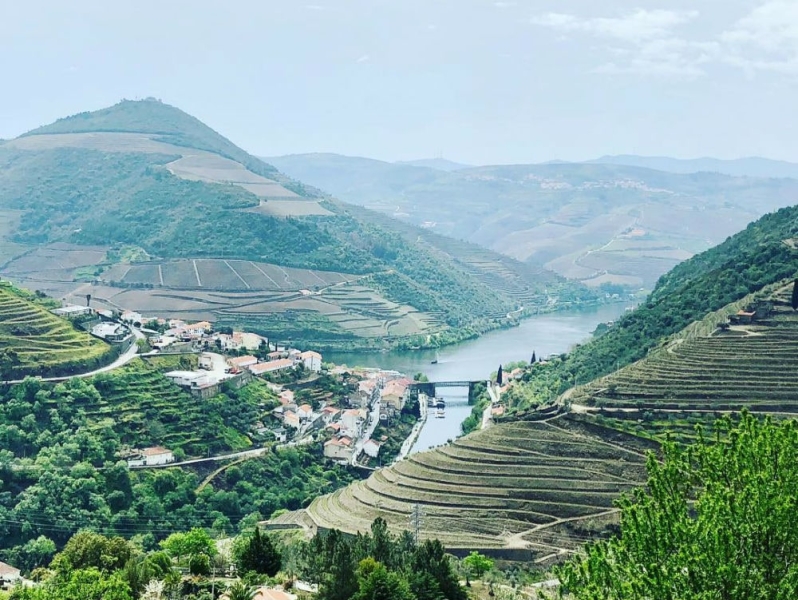
Photo: @brookiek84/Instagram.com
The Douro River Valley is included in the UNESCO World Heritage List. It can be reached by train, car, or even by one of the boats that leave Porto in the morning and return in the evening. The valley is covered with hills on which grapes, fig and lemon trees grow. This is where the wineries and cellars with the best port wine in the world are located.
Guimarães
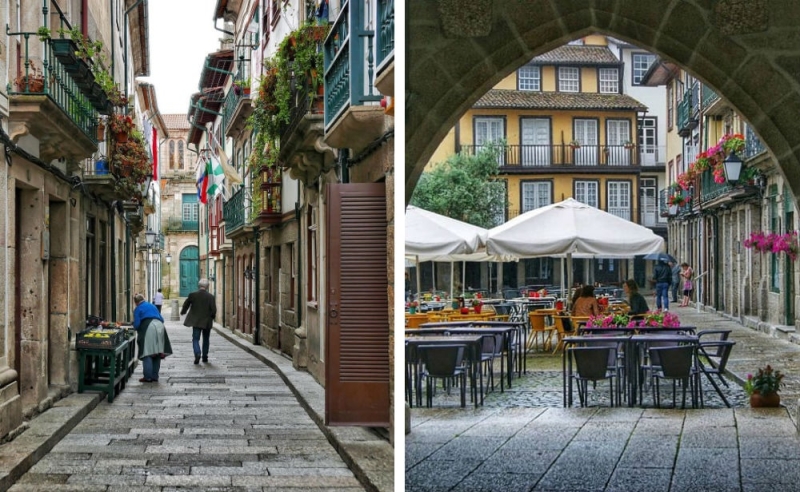
Photo: @audiosoup/@mpaulino82/Instagram.com
Guimarães is a cute medieval town 50 kilometers northwest of Porto. The historic city center has cheap restaurants, medieval houses and ancient fortress walls. The Ducal Palace houses an excellent collection of tapestries and furniture from the 15th century, but only ruins remain of the Guimarães Castle. And the best view of the city opens from the cable car cabin, which leads from the city to Peña Hill.
Braga
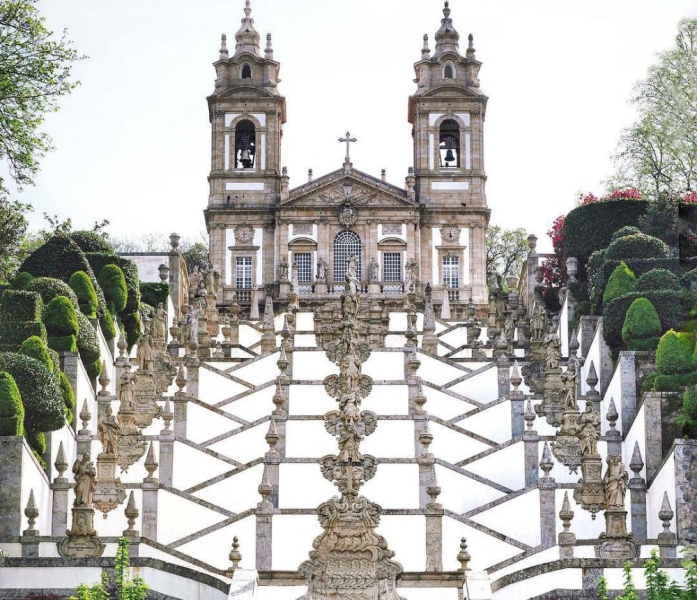
Photo: @civilking/Instagram.com
Braga lies 50 kilometers from Porto and is considered the religious capital of Portugal. The city has an 11th century Cathedral, medieval houses, palaces, a museum with a huge collection of ancient objects, as well as a museum of the artist Enrique Medina. And 6 kilometers from the city there is one of the most beautiful monasteries in Portugal, Bom Jesus do Monte, with an amazing staircase with crossing flights that leads to the top of the hill.
When booking a room on OneTwoTrip, select your options and read reviews to help you find the perfect option.
Preview photo: @magicalyellowtram

